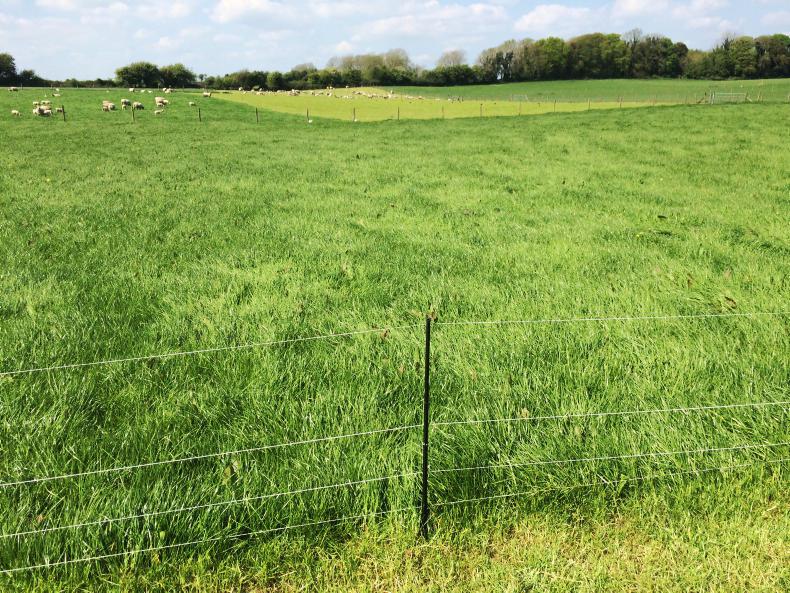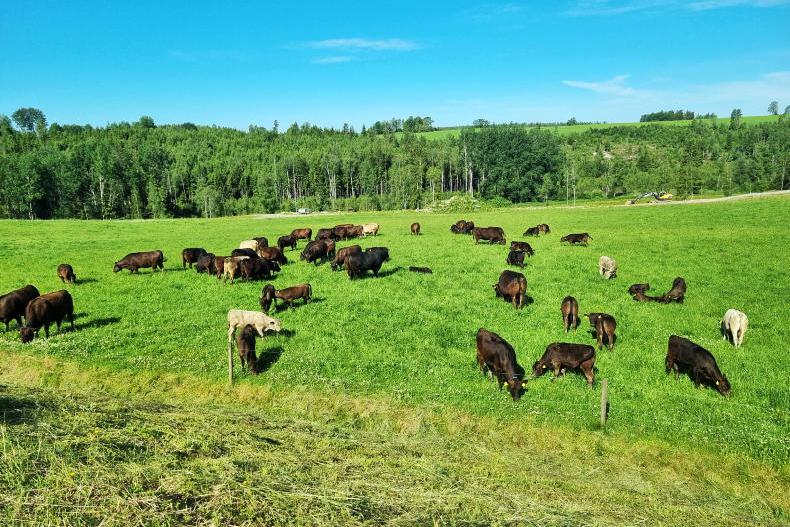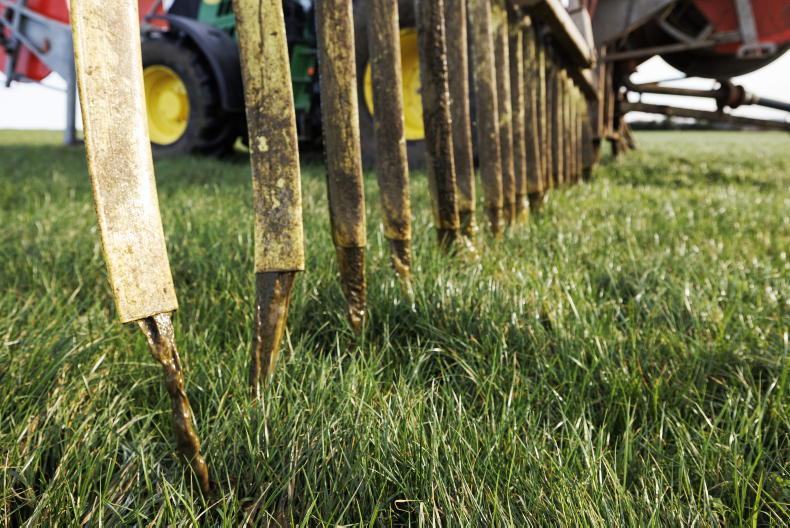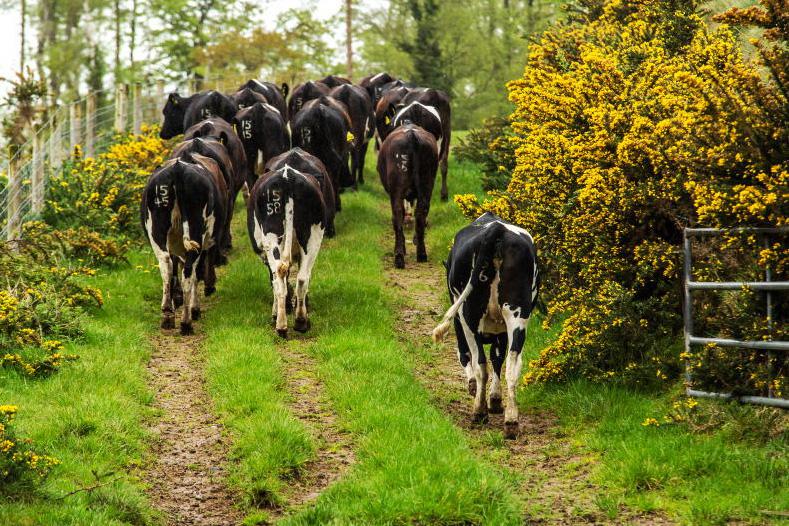The high cost of permanent sheep fencing – which can range anywhere from £2.10/m to £5.50/m, depending on the specification used – is often seen as a barrier for splitting paddocks or practising mixed grazing on livestock farms.
Thankfully, this is changing, with more companies realising greater demand from farmers in improving grassland management and expanding the range of fencing materials they offer.
Many of these operate on temporary electrified fencing, which work exceptionally well once sheep become accustomed to them.
Advice to farmers
The advice is generally to erect three strands of wire, with the bottom row 6in to 9in from ground level, depending on the height of vegetation.
Farmers generally stick to three to four strands for boundary fencing, but some find that once sheep are used to the fence, they can get away with two strands for internal divides.
This, of course, also depends on how quiet the sheep are.
The table below gives a sample of some of the temporary electric fencing options currently available to farmers.
It also gives a rough guide price, but it is important to note that the cost can vary significantly, depending on the specification of materials used.
Combining temporary and permanent fences
For many, there will be scope to combine temporary fencing with a permanent fence that is already in place.
This can be done at a very low cost, ranging from 20p/m to 30p/m, by erecting two strands of wire and nailed/screw-in insulators on existing posts.
Some farmers may also wish to use the opportunity to erect a new permanent wire fence that will be used afterwards, to graze cattle or livestock in a mixed grazing system.
Options when purchasing an electric fence
Erecting a fence is only one part of the task. A critical component of maintaining a stock-proof fence is having a fence with a good output. Once animals become accustomed to an electric fence, there are generally few issues, but it is important that the correct output is achieved at the outset.
There are a number of options in purchasing a fence.
The most common are a battery or mains-operated fence, but there are also now fences on the market that can work on either mains or battery, providing better options for fragmented lands, as well as solar fences that also have a back-up battery facility.
A question of costs
Costs for battery fences start at £70 to £100 for lower-output nine-volt fences, rising to £150 to £250 for stronger fences and solar units capable of covering 2km or five acres.
Mains fencers, where they can be used, vary significantly in price, depending on output.
Entry units with an output of 0.5 to 0.8 joules and covering two to five acres range from £70 to £120.
Stronger four- to five-joule units – suitable for fencing 40 to 60 acres – cost £200 to £250, with standard six- to seven-joule units costing £350 to €450.
More complex units capable of recording and altering output and high-output units covering 300 acres plus, can cost £750 or more.
Comment: New heavy-duty steel post capable of holding two or four rows of wire. Can hold combination of wire with insulator attachments for electrified wire.
Advantages: Robust post giving greater stability for mixed livestock grazing systems.
Posts can be pulled up and re-erected.
Long 30-year warranty for posts and 10 years for insulators.
Disadvantages: Posts are a significant outlay at the outset, but work out lower cost over a long lifetime.
Take longer to put up than PVC or pigtail post, but are more targeted at a fence with greater stability.
Guide price: 5ft paddock posts with four strands cost £3.95. Insulators cost 58p. At 10 posts per 100m and three strands medium-gauge wire costing 10p/m for three rows, fence costs approximately £3.97/m.
Comment: Various similar options are available from Gallagher fencing and Cheetah Electric Fencing through trade or online.
Advantages: Quick set-up, with good stability.
Works very well in fencing, particularly exposed areas.
Facilitates strip grazing in forage crops.
Two-spike leg.
Disadvantages: Animals can sometimes become tangled in wire, a high risk in young animals and a mains-operated fence.
Need a lot of rolls to cover a large area.
Guide price: Gallagher Turbonet: £2.30 to £2.50/m (higher cost due to heavy-duty turbo wires, which company says provides more shock).
Cheetah electric sheep/poultry netting: €2.44/m including VAT (netting is higher and has smaller square openings).
Comment: Company has brought out a stronger model called Gallagher Smart Fence 2, which has a stronger main section upright post, which was previously vulnerable to breaking.
Advantages: Posts with two-spike legs, reels and wires combined in one unit, allowing for very quick set-up.
Four strands of wire with five height options, giving good protection.
One turbo wire at height of greatest risk of breach.
Disadvantages: High initial cost, but reduced by lower labour requirement.
Guide price: Costs vary through traders – but approximately £2.10/m to £2.40/m.
Comment: Widely used on cattle farms and may be an option to capitalise on existing materials by purchasing insulators.
Advantages: More robust than PVC posts for grazing cattle and sheep.
Two-spike leg giving greater stability.
Disadvantages: Need to purchase insulators costing 50p to 55p each, adding on £1.00 to £1.10 to cost.
Takes time to set up wires.
Guide price: Cost around £2.00 to £2.50 per post and £1.00 to £1.10 for two insulators. Taking two rows of medium-grade polywire at 14p and one top strand of standard medium-grade electric wire, fence can be erected for as low as 64p/m to 71p/m.
Comment: Traded in the majority of coop’s or agri-outlets. Come as standard in 10s, but can also be purchased individually.
Advantages: Most choice for varying fencing height with eight options available.
Low-cost fencing post.
Post is fully insulated.
Disadvantages: Become brittle with age, leading to poor lifetime.
Break easier than pigtail posts under pressure.
One-spike leg, giving less stability.
Takes time to set up wires
Guide price: Generally £1.25 to £1.75 per post. With 12 posts for 100m (excluding strainers) and three strands of polywire costing 7p/m. Cost for three strands can be as low as 36p to 42p/m.













SHARING OPTIONS